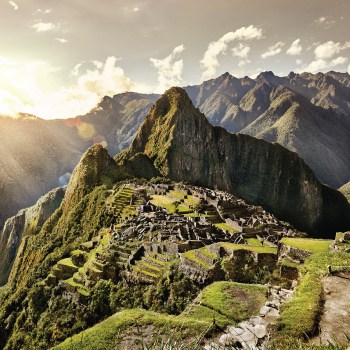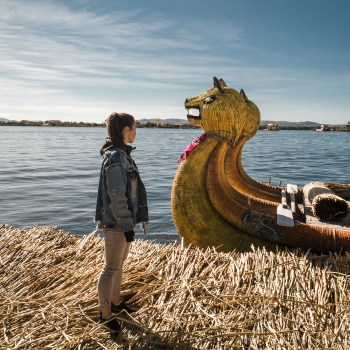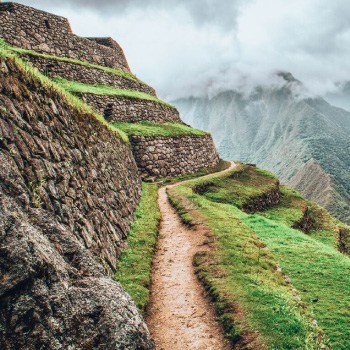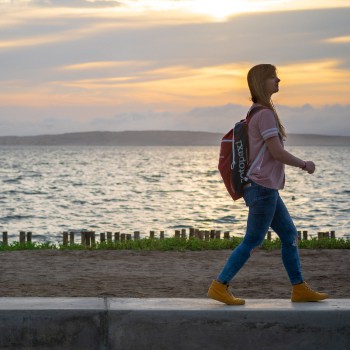The Amazon River is the second largest River in the world. Not many people know that the Amazon actually starts in Peru, before winding its way out to the Atlantic Ocean in Brazil. It is considered that the main source for the Amazon River is The Ucayali-Apurímac River, which starts high up in the Peruvian Andes, not too far from Machu Picchu.
The Ucayali-Apurímac River flows downstream until it meets the Marañón River south of Iquitos in the north of Peru. Here the two rivers converge to form what we know as the mighty Amazon River.
Cruise Operators
There is only a handful of Amazon Cruise Tour Operators out there, and the quality and price can vary greatly depending on your preferred choice. Luxury cruises are popular and vessels such as the Delfin I & II and the M/V Aqua offer exception comfort, services and top class guides. At the lower end of the range, considered ‘adventure cruises’ you have vessels like the M/V Jungle Discovery and M/F Selva Viva that offer a more basic cruise more affordable pricing.
Amazon River cruises are not cheap, and even the more affordable range of tour operators are still quite expensive. Price range from several hundred to several thousand US Dollars, so be sure to understand what you are getting before you hand over any payment.
In our Peru Guide we have taken some time to tell you about the best of the cruise operators across a price range. Click through the links below to find out more.
| COMPANIES | SCHEDULE | DEPARTURE TIME | DEPARTURE LOCATION | ENGLISH SPEAKING ASSISTANCE |
|---|---|---|---|---|
| CRUZ DEL SUR | DAILY | 4:00, 16:00 and 18:00 | PUBLIC TERMINAL | NO |
| PERU HOP | DAILY | 19:00 | PRIVATE TERMINAL | YES |
| CIVA | DAILY | 1:30 | PUBLIC TERMINAL | NO |
| GREEN TOAD | WEEKLY | 14:00 and 18:00 | PUBLIC TERMINAL | NO |
Destinations
There are principally two options for Amazon River cruises, the first travelling north from Iquitos along the Amazon to Santa Rosa Island where the borders of Brazil, Columbia and Peru meet, or secondly travelling south from Iquitos to the Pacaya-Samiria National Reserve. Cruises usually start and finish in the same place, with the exception of cruises finishing at Santa Rosa Island, where passengers have the option to transfer to an airport, and fly onwards. Cruise itineraries vary depending on which tour operator you choose, but typically range from 3 days to 7 days in duration.
High & Low Water Seasons
The Amazon River region of Peru’s Jungle has two distinctive seasons: the low water season between June and November (winter in the southern hemisphere), and the high water season between December and May (summer in the southern hemisphere). However it is worth noting that in both seasons this region receive a substantial amount of rain. In a typical year, the Amazon River Rainforest experiences 200 rainy days, with an average rainfall of 12 feet per year. Each season brings benefits and drawbacks depending on what you are hoping to achieve on your trip.
The slightly cooler high water season has average temperatures of 86 degrees Fahrenheit (30 Deg. C), just 12 degrees lower than the low water season. In this season Amazon Basin rivers and streams rise by an incredible 23 feet, meaning that the large cruise boats and smaller expedition skiffs can navigate and access more of the jungle. Additionally, with the high water level you are closer to the tree canopy, and are likely to see more Amazon mammals and roosting birds. However, at this time of the year there are fewer opportunities to hike in the Jungle, as many of the trails are flooded or heavily bogged, plus there are more mosquitos waiting to bite you.
The low water season, which has average temperatures of 98 degrees Fahrenheit (37 Deg. C) is warmer than the high water season, but still receives a significant amount of rainfall. At this time of the year the rivers flow much lower, and access by boats and skiffs are restricted meaning that deep jungle exploration is done by foot. Hiking at this time of the year is preferable, as the trails are drier and less prone to annoying mosquitos. The low water season is also a good time for fishing enthusiasts, as the calmer shallower waters provide greater opportunities to catch fish; including piranha.










